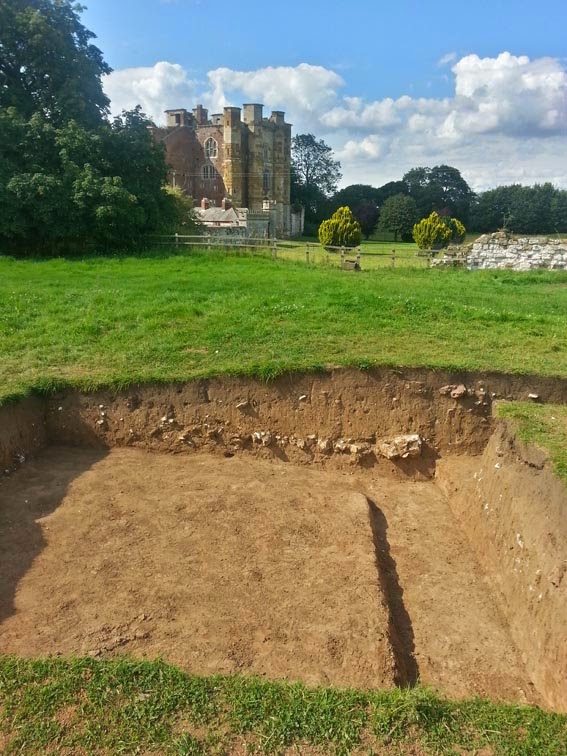From past experience, the start of the final week heralds a
sense of stress and panic that escalates as the end of the dig draws ever
nearer. However, this year is different and instead an aura of calm and
tranquillity has enveloped supervisors and excavators alike. There is a very
simple reason for this; unlike previous years, the number of trenches is
gradually being reduced and we thus have more than enough resources to cope
with the final excavation and recording of our principal trenches, N and P.
 |
| The excavated northern robber cut |
Trench N
We have completely excavated the robber trenches for the
north and south walls of the hospital church. As we suspected, the vast
majority of the stone from these walls have been completely removed, although
some extremely large foundation stones remain where they have been keyed into
the remains of the east wall. The size of these stones and their rough finish,
which contrasts sharply with the superior medieval masonry we have encountered
elsewhere, has raised the possibility that the chapel may have Anglo-Saxon
origins, although we have little dating evidence to prove this.
Within the church, removal of the orange clay layer has
revealed at least three successive floor surfaces; a compact red clay layer, a
sandy context with limestone blocks and a compacted mortar floor which would be
the ideal foundation for a flagstone floor that has since been robbed. We have
now started to record these before starting to excavate them sequentially.
 |
| Discussing the possible drain |
Trench P
The excavation team in Trench P have been hard at work
cleaning off the area below the demolition debris. We think this is of medieval
date as it has produced large amounts of medieval pot alongside large pieces of
window glass and roofing lead similar to those found in Trench N. The area
alongside the exterior of the church has also been excavated down to the large
foundations of the church; these are identical in size and form to those found
in Trench N and suggest the first building on this site was constructed in a
single phases. Clearing this area has revealed a gap in the stones in the
church’s western wall. Although we are still ruminating on what this could
possibly be, one possibility is it is a space for an external water pipe or
drain coming under the wall; we will investigate this mystery further in the
coming days.
 |
| Going...going...gone! |
Trench R
Excavation on Trench R has come to an end. The final layer
of sand which covers the entire trench has been painstakingly recorded, the
sections carefully drawn and there is simply no more archaeology to uncover.
Although we were able to ascertain the cause of the earthworks in this area; a
building probably medieval and constructed from wood on a stone base, we have
little evidence for its function due to the ephemeral nature of the feature.
However, you never know what you might find when you start to excavated a
trench, and at least it wasn’t empty!
 |
| Yellow hard hats, the latest Trench T accessory! |
Trench T
The end of Trench T is also nigh. Having ascertained its
true function as a lime kiln, we excavated the slaked lime from the bottom of
the kiln to reveal an extremely well preserved, and rather beautiful, brick
floor. As a result, we decided to extend the trench (again!) to the east to
find the other half of the kiln, ensuring we have excavated around half of the
entire structure. This task was completed today and the kiln now has a brick
floor on either side of a channel which runs out of the kiln’s outtake,
presumably to facilitate easier extraction of the slaked lime. We have a
further slot to excavate on the outside of the kiln, but this will be achieved
within the next couple of days and there will then be nothing else to do except
record all brick walls, floors and vaulting in their beautiful entirety.
The speed with which trenches are currently closing is
testament to this being our most successful yet; we have had the most exciting
archaeology yet and located a hospital which had been long forgotten and everyone,
whether director, supervisor or digger, have been able to enjoy themselves.
That said, we still have five days to go and, as any archaeologist will tell
you, anything could happen!
 |
| The brick floor of the lime kiln |
No comments:
Post a Comment